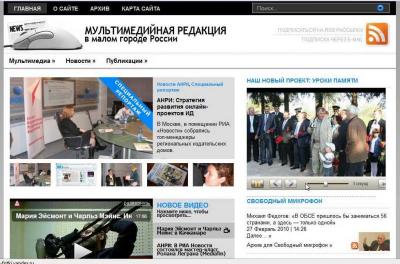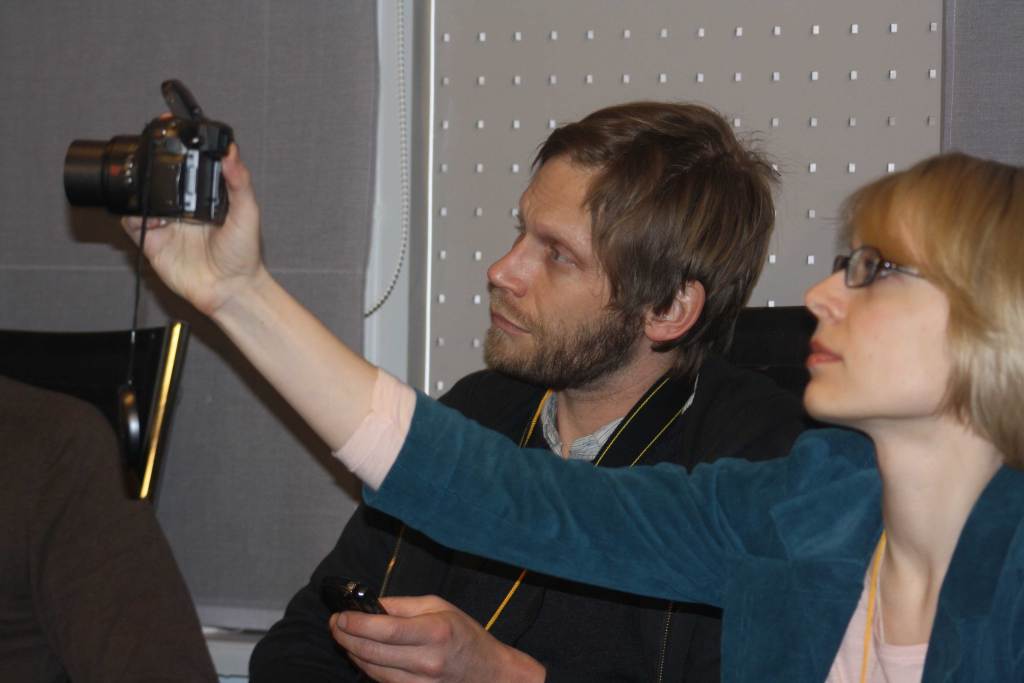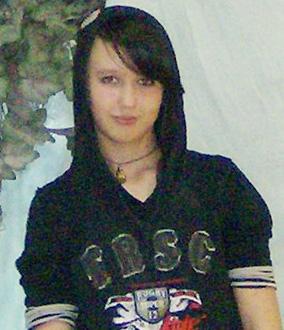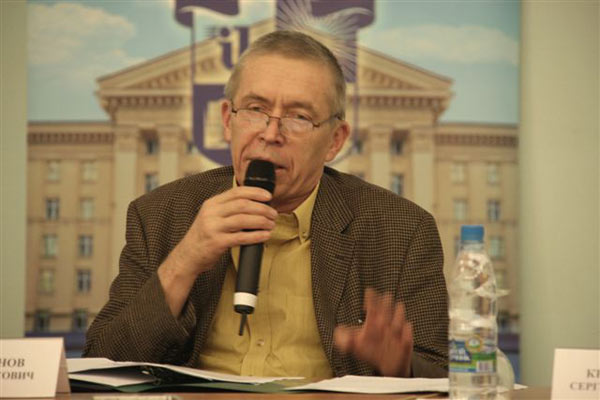| Starting in online journalism |
| — | |||
| By | |||
|
This means it must inform quickly and simply, that it must be pleasing on the eye and make people want to return to the site time and time again. And it must be fast-loading and free of wasted words and padding. The online journalist The role of an online journalist is largely similar to that of any other journalist. The journalistic rules are the same; the only differences are the platform and the skills you need to present that information online.
The website remitIf the website you are working on is a stand-alone production (one that is not connected to another media operation) you will be free to present the information as you see fit, within your newsroom's editorial guidelines.
If the website you are working on is part of a larger media concern, you will be expected to reflect that media operation's newsgathering and news production strengths online. In more and more cases, websites function as part of a converged news operation. The aim is to reflect the news brand across all outlets, including online and other interactive platforms. In that case, you will need to come up with a persuasive reason for investing resources in covering different stories online than your news organisation is covering in print or on air. You will be expected to add value with content and functionality aimed at the online audience, but the user should find the same facts, tone and focus online as they do wherever your news organisation is delivering news content.
Your role is to include the elements that increase and enhance a user's understanding of a story, or enable that user to engage with you, and others, about the news item in ways that they can't on air or in print. Unlimited spaceThere was a time when it was felt that one of the strengths of the internet was that it didn’t limit the journalists to a particular story length; journalists could write as much as they wanted. All the column-inch restrictions that applied to print journalists, and the news bulletin time limits that applied to TV and radio were not relevant to online journalism. This was and is true, but if that freedom is not managed properly, it can lead to lazy, indisciplined writing. News stories need to have a standard style, layout, and format. There will always be cases where longer, background features are needed in order to explore issues in-depth. However, hard news stories still have to be presented in tight, short-form writing. The news stories need to follow a standard house style. There needs to be a consistency of presentation format so that the audience feels comfortable with what they are reading. You need to make sure you know your news organisation's house style. If it hasn't got one, volunteer to write one; it's important for consistency of approach. Story length and styleThe ideal online news story will be in the region of 300-500 words. This is not a hard and fast rule, just a guide. Some stories will be a lot less, and some features and in-depth analysis pieces can be longer, but the basic news stories should remain short.
It is important that you learn to write as economically as possible with no unnecessary or wasted words. The news operation you work for will probably have a newsroom CMS (or content management system), this is where you write your stories. There are usually boxes for the headline and summary, and another field for the rest of the story. There might be functions for adding images, audio and video, links, and text boxes. Some of the boxes, or fields, might have character limitations so that you can’t write too much. This will usually be because the content you write for the Web is also to be sent to other text-based platforms, such as SMS and WAP (more about that in the ). Story constructionThe headline needs to make sense standing alone. It must not be a label. It will be a short sentence. This is not only good journalism, but it also means that your news organisation can use the material as a headline ticker on other platforms. The first paragraph must not repeat the headline, but must add information without duplication. It must also work on its own and with the headline. Your news organisation might want to use this for an SMS service. You might find that your news organisation has arranged the CMS so that the headline and summary of your story automatically publishes on the index page of the section you are working in, or the front page of the site. The next part of the story will be a series of paragraphs, each adding more and more essential facts to the story. By the time you have written 100 words you should have presented the main elements of the story. The remaining 400 words can be used to add value, including quotes, statistics, and analysis. Many people choose to write sentence-long paragraphs for the web. There is no hard and fast rule. Some feel the breaks make it easier on the eye; others elect to stick with conventional paragraphs. You will need to adapt to the house style of the site you are working on. Story deconstructionIf you feel your story is worth more than 500 words, and can only be told properly in 1,500, it might be worth laying out all the facts and seeing whether you can deconstruct the story into small, but related, component parts.
Deconstructing a longer news story is an important technique for the online journalist. It means that they can still offer the core facts of the story in 500 words, but they can also offer links to separate stories, which offer further explanation of elements within the main story. It also means that the user is not faced with too much text, and it breaks the text into manageable chunks. (It also makes business sense. If you are working on a commercial news site, and the income is generated from adverts placed on the site, the deconstruction of the story creates more opportunities for the positioning of adverts.) Each part of the deconstructed story will have its own headline and these headlines can be flagged up in the main story (and each part of the deconstructed story) as related news items. Story deconstruction enables you to show the basic essential elements of the news item in the main story, while, at the same time, offering you a tool for explaining the more complex issues in what some people call, ‘side bars’. Facts not paddingAs explained earlier, there was a time when it was felt that the online journalist could write as much as she or he felt like. Those times have changed. In a media world where many news organisations are creating content once for multiple outlets, the days of producing long unwieldy text for news stories are past. Features are different, but journalists writing news stories need to keep their writing crisp and tight. For the user, time often costs money. They will not thank you for padding between the facts, or indulging in poetic pros when what they want are the essential details.
Your job is to deliver facts to users in the most efficient and effective manner, not to obscure those facts with unnecessary verbiage. Those who turn to your site for news will not want to keep clicking on stories that say little more than the headline and summary. They must always find some unique added value. They will not want to scroll through a WAP version of your website to find that the call charge is spiralling, but the information they are receiving is not adding to their understanding of the story. Making the most of the webHaving said that, the web offers many fascinating ways to tell a story differently. When the editor hands a story to a journalist there is usually a top line. Something has happened, there are some basic facts already in. The journalist has to make sense of it and deliver a report as quickly as possible.
For those wanting news of relatives, the list of the nationalities who died or survived was a key fact. However, to draw up the list in text would have meant several paragraphs. This is where the facts can be displayed in a text box so that those who want to scan read can reach the facts faster. It offers the user a quick-glance view of the main elements without having to read the whole story. The text box can then also be used in other stories, or on the site’s main page, and it also offers a break in the text in your story page. Timelines and fact files Using the same technique, you can return to the story at a later stage and produce another text box offering a time line or a fact file. These, in turn, can link to the stories covered at the time, making the text box a valuable tool in helping the user navigate a complex grouping of facts. Again, these text boxes, timelines, and fact files, can be used in all the other stories, offering the user, wherever she or he ends up, all the details they need in one place, with the opportunity to find out more by clicking on the issue or fact they are most interested in. Graphics and imagesGraphics can provide a great way to deliver the basic facts of a story in a way that catches the eye and informs at a glance. They are not a substitute for well-written text, but if included in a story, can draw out, or point up, important details from your story. Take for example the story of the sinking of the Russian nuclear submarine Kursk in August 2000. CNN created an online special. In it, they had two graphics that summed up two main details in two simple images. One showed the Kursk alongside a jumbo jet.
The other showed it on the seabed alongside the Eiffel tower.
The user could see clearly the size of the vessel, and how deep it was lying in the Barents Sea. Graphics do not replace the words, but they can help users understand the more complex facts and figures in a way that both informs and entertains. Images and captionsImages, particularly those used on the front page and the section index pages, should tease a user into the story. Head and shoulder pictures are rarely the best choice, although in some stories, such as political meetings, they are hard to avoid. However, a powerful image can add enormous value to the impact of stories. The best pictures are those that stop the user in his or her tracks. The images also need to be looking into a page. If your Website puts its images to the right of a story, you don’t want the subject looking right. That would mean they are looking out of the page rather than into it. The following image is looking the wrong way. 
Image looking the wrong way
This image is looking the right way.
Captions need to enhance understanding and stimulate interest. They are not labels. They must not state the obvious. They, and the headline, are often one of the most difficult pieces of text to write. Get it wrong and the credibility of your news brand could suffer. Read them over and over again. Ambiguous headlines and captions are a real danger. Think through how your words might be misinterpreted and misunderstood. If there is any doubt, rewrite it and keep it simple.
The aim is not to be clever. Being clever can confuse. The aim is to be clear, crisp and capture the reader interest so they will read the story and find out more. Original content and plagiarismWith most breaking news stories, the major news operations will be dealing in the same facts. Their sources will usually be the same; they will be feeding off the same wires services and making similar check calls. It is not surprising to find almost identical stories being published on different sites. In all cases, a news operation should try to find out how they can add a value element the other news outlets can’t deliver. At times like these, the online journalist might want to include a quote from an exclusive report from the scene filed by one of the news organisation’s correspondents. If the website is attached to a newspaper there might be an exclusive photograph taken by one of the paper’s photographers. If there is, this should go at the top and be flagged as such. If you are working for a website connected to a radio or TV broadcaster there might be exclusive audio just in, or a clip of some video only your organisation has and which you can add to the story. The key is to look for originality. Find out what your news operation does that the others can’t match and focus on presenting that rather than worrying about where the opposition is stealing the lead in other areas.
Never lift content from another site and present it as your own. Not only is it unethical, it is also extremely dangerous. If you can’t verify every fact and detail as either coming from your own sources or from one of your news organisations correspondents, or attributed to recognised sources, don’t include it. Plagiarism is all too easy in the cut and paste world of computer screens and the web. There was a saying that the web was all about ‘copy and improve’. In a way that is understandable when it comes to design and layout. However, it is never acceptable when it comes to story detail. Despite being dishonest, plagiarism means signing your news brand's reputation up to details you do not know are true. Once you write a sentence and it is published on your site, it is then considered to be verified by your news organisation. It is a massive risk, both personally and professionally. Only publish what you know to be true and what you can stand by. Getting it first, or getting it rightOnce a news story has broken and the information is in the public domain, it is often a race to be first with the news. Trying to beat the competition is a worthy aim, but only if you are sure you have all the facts and that they have been checked and double-checked. There is nothing worse than sending out a breaking news alert and then having to retract the story. Your users will realise you got it wrong. They will seldom know when you got it right and beat the opposition. They may not even care. Don’t deal in rumour. Tempting as it might be to carry vague details of an incident that has taken place, only stick to verifiable facts. You can flag up to the users that something is going on. Breaking news ticker headlines such as ‘reports are coming …’ are acceptable. However, unless you are a correspondent on the ground and in the know, you must not speculate on the cause until it has been confirmed by a reliable authority. Comment and opinionAs in all journalism, the role of the reporter is to present fact. You are not there to add comment, and you are certainly not there to voice an opinion. If you are a correspondent, with a particular brief and an expertise, you will be expected to offer analyisis of a situation you are covering, this could include your informed view on how it is likely to develop. However, most web journalists working on a general news site will not be required to do this. Comments and opinions have to be attributed and not woven into a story as if they are facts. They are only justified if they come from someone involved in the incident. However, valid quotes expressing an opinion have a useful role to play in online journalism. You might want to add a text box to the story with the most powerful quote. This not only breaks up the text, in the same way as an image would, but it also offers another chance to catch the eye of the reader with one of the most important elements of the story. Use them sparingly. Two in one story might be too much, bearing in mind you might also have an image, a fact box, and a graphic. Don’t over clutter with gimmicks. Only use those that help tell the story properly. Too many and you might start to lose the readers’ interest. Publishing an article in partsIn a breaking news situation you often have very little to go on. There might be one fact on which the story is based. The first thing is to knock out the one sentence containing what you know and publish that. You can then continue to add to the story, republishing as you go. The first version might not even contain an image. It might be one short sentence. The next paragraph might be some background material. It could be a sentence putting the event into context. Each time a sentence is added to the story, you can republish. There is no point holding back until you have the whole story if you are in a breaking news situation. You need to publish as you learn more. Always remember that a fresh summary, picture, and headline might be needed as the story develops and grows. However, don’t get carried away. There is a skill to knowing when a story is finished and when another story begins. When to save and when to overwriteAs a breaking news story develops, more and more information will be added. Eventually it will be a full story. However, more information will continue to arrive. A key skill of an online journalist is knowing when to save a story as an archive of an event in history, and when to start a new version. 
the twin towers after being hit
For example, consider the story of the two planes that flew into the twin towers on 9/11. If the story had been continually overwritten, and the original story of the first plane hitting the first tower had not been saved as a story in its own right, we would not have an online archive to link back to. It's about creating milestones in history in the form of articles written about specific events. The second plane hitting the second tower is also a story that should be saved as an event. If we don't do this, all we would be left with is a long story that had been continually updated, but that had failed to mark the significance of each development. A website that fails to mark each incident will lose out in terms of having a credible archive. 
the memorial
Taken to the extreme, if the 9/11 story had been continually overwritten without saving each development, all we would have, if we look at the story two years on, is the opening of the memorial park at Ground Zero. However, the first incident was a story in its own right, and a milestone in history, which we might want to link back to in years to come. Therefore, you need to know when to stop adding to, or overwriting an existing story and when to start a fresh version. This is usually the duty of the person who is running the site and who has instructed you as to what is needed, but you need to think of it too. Issues like this will be covered in the managing a website module. Links, the benefits and dangersUsability studies have shown that, for some, the links we offer on our stories are one of the most important elements. Links should be seen as part of the story. Otherwise there is no pointing including them. They should also be seen as adding value to the words we write. They are not there to repeat those words, but to offer further information that we are either not able to say, or have not researched. A typical example would be links to research papers which back a particular scientific finding that is running in the news. The lazy option is to link to the front page of the educational establishment that carried out the research, or to the home page of a company that might be in the news. The proper way is to link to the actual content that features in the piece you are writing. Even better if you can link to the detail that you don’t have time or space to explain. You need to spend time researching these links to make sure they are worth offering as another click for the person reading your story. Although links can be a valuable tool in helping you tell a story, there are also many dangers lurking in links. You have no control over the content to which you are linking. You might be linking to the right page as you build the story, but who is to say that the person running the site you are linking to won’t put something else there in the future? Advertisers can also take advantage of links. Journalists rarely return to check them. It would be all too easy for an unscrupulous company to point the link at a commercial page once they know you have added it to your site. You need to be vigilant and only click to trusted sites that share a similar reputation to yours. There is also the issue of taste and decency. Although most sites protect themselves with words such as, “this site takes no responsibility for the content contained on the sites it links to”, you need to take some responsibility as to which sites you feel are appropriate to be associated with. One good rule is to make sure that the content that exists one click beyond the link you are offering matches the standards of taste and decency that you apply to your own site. Cutting clutter and maximising the minimumIt is easy to become so immersed in a story that you become swamped by details and lose site of what is important. Sometimes the journalist writing a piece can be too close to the facts and unable to see the top line. Journalists can sometimes make too many calls, look up too many background pieces, and be too involved in the subject to see the real news angle. Their minds, like their desks, become cluttered with data. There is an art in online journalism of cutting the clutter to reveal the core of a story. Often the duty editor or chief sub will help. If you are on your own, you will continually need to keep asking yourself what the story is about, what has happened, why it is important, who it affects, how it affects them, and what is likely to happen next. Leave the complexities aside, go back to basics. What is the one line that sums up the story? Keep it simple with short, sharp sentences. List what you know. Don’t try to be clever. You are writing to inform ordinary people, not impress your peer group. At other times, you will have very few facts, but you will still be expected to write a piece. A running news story will need updating and you might only have one fresh detail to go on. Your task then will be the opposite of cutting the clutter. In these circumstances, you will be forced to maximise the minimum. There is an art to this too. You must not trivialise the issue by drawing it out dishonestly, but you can add real value be restating the obvious in the context of a breaking news story. This is not a matter of padding with verbiage, but rather a matter of thinking what ordinary people will be wondering and filling the gaps with information stored within your news organisation and presenting that online. Don’t underestimate a reader's intelligence by overstating the obvious, but also be careful not to undersell the story by failing to state the basics. It is a fine balancing act, but, once perfected, it can make a meaningful news story out of one new fact. Again don’t rule out trying to add a quote from one of your news organisation’s specialist correspondents. This again adds a value specific to your news output. Next Module:
|
|||

 The purpose of every news website is to deliver essential information to its users in the most effective, elegant, and efficient manner.
The purpose of every news website is to deliver essential information to its users in the most effective, elegant, and efficient manner. If the website you are working on is part of a larger media concern, you will be expected to reflect that media operation's newsgathering and news production strengths online.
If the website you are working on is part of a larger media concern, you will be expected to reflect that media operation's newsgathering and news production strengths online. 
 Take the example of the . 57 people died (the death toll rose later) after a pleasure boat capsized in the Gulf.
Take the example of the . 57 people died (the death toll rose later) after a pleasure boat capsized in the Gulf.



 С Новым Годом, дорогие коллеги!
С Новым Годом, дорогие коллеги! Глава Google предупреждает о последствиях "открытости" данных для пользователей
Глава Google предупреждает о последствиях "открытости" данных для пользователей Сайт «Эхо Москвы» — настоящее и будущее
Сайт «Эхо Москвы» — настоящее и будущее Washington Post экспериментирует
Washington Post экспериментирует Владимир Касютин: Вставная челюсть из виджетов и гаджетов
Владимир Касютин: Вставная челюсть из виджетов и гаджетов Юлия Щукина: В Интернет! Страху вопреки...
Юлия Щукина: В Интернет! Страху вопреки...

 Сессия топ-менеджеров АНРИ в лицах: Человек с фотоаппаратом
Сессия топ-менеджеров АНРИ в лицах: Человек с фотоаппаратом Сессия топ-менеджеров АНРИ в лицах: Анна Знаменская (генеральный директор Digital Access)
Сессия топ-менеджеров АНРИ в лицах: Анна Знаменская (генеральный директор Digital Access) Twitter-трянсляция выборов в Украине
Twitter-трянсляция выборов в Украине Областная дума за сотрудничество с «Эхо недели»
Областная дума за сотрудничество с «Эхо недели» "Эхо недели": В Железногорске пропала 15-летняя девушка
"Эхо недели": В Железногорске пропала 15-летняя девушка "Эхо недели": Железногорский суд не восстановил в должности бывшего директора школы №9
"Эхо недели": Железногорский суд не восстановил в должности бывшего директора школы №9 "Эхо недели": В Железногорске иномарка сбила ребенка
"Эхо недели": В Железногорске иномарка сбила ребенка Как сайтам CМИ получить больше трафика?
Как сайтам CМИ получить больше трафика? IJNet: Нужно ли публиковать анонимные комментарии читателей?
IJNet: Нужно ли публиковать анонимные комментарии читателей? Юрий Соломонов: Не блог есть что...
Юрий Соломонов: Не блог есть что... ← Подпишись на RSS!
← Что такое RSS?
← Подпишись на RSS!
← Что такое RSS?
 ← E-mail рассылка
← E-mail рассылка
Комментарии